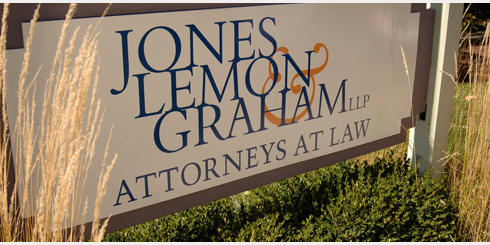by: Chris Graham and Shelly Hall

Summary: Today’s post focuses on a recent Seventh Circuit decision, BancorpSouth v. Federal Insurance Co., No. 17-1425 (7th Cir. Oct. 12, 2017), affirming dismissal, for failure to state a legally viable claim, of a bank’s complaint against an insurer for alleged breach of a duty to defend and pay for a $24 million settlement of a consumer class action alleging improper overdraft fees, and related “bad faith.” It involved a duty-to-defend policy and a broad “fee” exclusion and, although other policies provide otherwise, this one had no exception for Defense Expenses. At the end of this post, we discuss other cases involving similar issues, but with different policy wording and, in some cases, different results. If you’re a broker or a risk manager, this case and those discussed at the end show why you should insist on a Defense Costs exception to a fee exclusion.
The coverage suit: In BancorpSouth, a bank sued an insurer for breaching a contract by failing to defend a class action and pay for a related $24 million settlement and for bad faith. Citing the policy’s exclusion “for Loss on account of any Claim … arising from … any fees or charges,” the Southern District of Indiana, applying Mississippi law, dismissed the bank’s complaint for failure to state a legally viable claim. Given the allegations in the complaint, the Court concluded that the insurer had no duty to defend. Because the duty to defend is broader than the duty to indemnify, moreover, the insurer had no obligation for the settlement; nor was there bad faith. The Seventh Circuit affirmed.
Policy wording: Subject to the policy’s terms, the insurer agreed to “pay, on behalf of an Insured, Loss on account of any Claim first made against such Insured during the Policy Period…for a Wrongful Act committed by an Insured or any person for whose acts the Insured is legally liable while performing Professional Services, including failure to perform Professional Services.” The duty-to-defend policy included a “fee” exclusion providing that the insurer “shall not be liable for Loss on account of any Claim…based upon, arising from, or in consequence of any fees or charges.” “Loss” included “Defenses Costs” and settlement costs. But the fee exclusion had no Defense Costs exception.
Class Action Complaint: The bank customer’s “opening allegation stated: ‘This is a civil action seeking monetary damages, restitution and declaratory relief from [the bank] arising from its unfair and unconscionable assessment and collection of excessive overdraft fees.’” The complaint alleged that the bank “maximized the amount of overdraft fees it could charge customers through a variety of means, policies, and procedures” including by “reorder[ing] debts from highest to lowest, instead of chronologically,” “fail[ing] to provide accurate balance information, and purposefully delay[ing] posting transactions,” “fail[ing] to notify customers of overdrafts, despite having the capability to ascertain at the point of sale whether there were sufficient funds in a customer’s account,” and “fail[ing] to make their customers aware that they can opt out of [the bank’s] overdraft policy upon request.” The customer asserted counts for breach of contract, unconscionability, conversion, unjust enrichment, and violation of the Arkansas Deceptive Trade Practices Act. He also sought to represent a class of “[a]ll customers in the United States who … incurred an overdraft fee as a result of the bank’s practice of resequencing debit card transactions from highest to lowest.” As relief, the customer, for himself and the class, sought a declaration that the bank’s “overdraft fee policies and practices” were “wrongful, unfair, and unconscionable,” “[r]estitution of overdraft fees,”‘[d]isgorgement of ill-gotten gains,” ‘[a]ctual damages,” ‘[p]unitive and exemplary damages,” “[p]re-judgment interest,” “costs and disbursements,” and “other relief” as “just and proper.”
Duty to defend: As is typical and as was the case under Mississippi law, whether the insurer had a duty to defend “depend[ed] upon the comparison of the language contained in the policy with the allegations contained in the underlying action.” In this instance, it was about “compar[ing] … [the fee exclusion], which excludes from coverage any claim ‘based upon, arising from, or in consequence of any fees or charges,’ with the allegations in the [customer’s] Complaint.” That the complaint included allegations that didn’t mention overdraft fees didn’t matter. “[T]hese individual allegations cannot be read in a vacuum, and instead, must be read in the context of the entire complaint.” “Read in its entirety, the only harm alleged by the [customer’s] complaint is [the bank’s] maximization of excessive overdraft fees on its customers.”
As the Court explained further:
The very first paragraph of the … Complaint specifically states that the crux of the lawsuit centers on [the bank’s] “unfair and unconscionable assessment and collection of excessive overdraft fees.” Moreover, the complaint defines the class of plaintiffs as customers who “incurred an overdraft fee.” Finally, every claim for relief asserted is specifically premised on the imposition of overdraft fees. The bank argued that the insurer had a duty to defend inasmuch as, per the complaint, “policies and procedures caused the customers’ alleged injuries, and [excluded] overdraft fees were one type of damages suffered as a result.”
Rejecting that argument, the Court explained: “To be sure, language focusing on ‘overdraft policies and procedures’ appears in a number of places, but it is always connected with the wrongful collection or imposition of overdraft fees.” The bank also argued that the fee exclusion was ambiguous, inasmuch as it didn’t say whether the “fees” were “payable to or by” the bank. Rejecting that argument, the Court explained that the fee exclusion by its plain wording, broadly applied to a “Claim … arising from … any fees or charges,” whether paid by or to the bank. The Court also rejected the bank’s argument that reading the fee exclusion as including overdraft fees paid by customers to the bank would make the “coverage for ‘Defense Costs,’ defined in the policy to include attorneys’ fees, illusory.” The Court explained that the ‘exclusion has no effect on [the bank’s] recovery of any attorneys’ fees on account of claims that are based on something other than fees or charges, such as a claim based on the quality of services provided by [the bank].” The Court also stressed that an insurer’s “decision” to include a fee exclusion in a professional liability policy “serves a necessary purpose of avoiding ‘moral hazard.’” Without the exclusion, the insured “could freely create other customer fee schemes knowing that they would be readily reimbursed by” its insurer.
Comments: Here’s a summary of other recent cases addressing coverage for overdraft class actions and issues similar to those in BancorpSouth:
• Fidelity Bank v. Chartis Specialty Ins. Co., Civil Action No. 1:12-CV-4259-RWS (N.D. Ga. 2013), applying Georgia law, addressed a “fee-dispute” exclusion, applicable to “Loss in connection with any Claim made against any Insured . . . alleging, arising out of, based upon or attributable to, directly or indirectly, any dispute involving fees, commissions or other charges for any Professional Service rendered or required to be rendered by the Insured, or that portion of any settlement or award representing an amount equal to such fees, commissions or other compensations; provided, however, that this exclusion shall not apply to Defense Costs incurred in connection with a Claim alleging a Wrongful Act.” Given the “fee-dispute” exclusion’s Defense-Costs exception, the insurer funded the bank’s defense of the overdraft class action. But it refused to pay the settlement. The District Court granted the insurer a summary judgment, holding that the settlement was uninsurable because the payments amounted to restitution and in any event fell within the fee-dispute exclusion.
• U.S. Bank National Association v. Indian Harbor Insurance Company, Case No. 12-CV-3175 (PAM/JSM) (D. Minn. Dec. 16, 2014), applying Delaware law, addressed exceptions to primary and excess policies’ “Loss” definitions, for “[m]atters which are uninsurable under the law pursuant to which this Policy is construed” or “principal, interest, or other monies either paid, accrued, or due as the result of any loan, lease or extension of credit by [the bank]”; and an exclusion for “any payment for Loss in connection with any Claim made against [the bank] . . . brought about or contributed in fact by any . . . profit or remuneration gained by [the bank] to which [it] is not legally entitled . . . as determined by a final adjudication in the underlying action.” The bank settled the underlying overdraft class action for $55 million, and sought coverage for $30 million of that amount plus defense expenses, excess of a $25 million deductible. The District Court granted the bank a summary judgment, rejecting the insurers’ argument that the settlement was uninsurable as restitution. Without deciding whether restitution was insurable, the Court—citing the “final adjudication” wording in the policies’ ill-gotten gains exclusion—explained that the “policies unambiguously require that a final adjudication in the underlying action determine that a payment is restitution before the payment is barred from coverage as restitution.” See Kevin LaCroix’s December 22, 2014 D&O Diary blog post for a detailed discussion of this aspect of this somewhat controversial decision. When procuring the policies, US Bank’s broker and risk manager had no need to worry about a Defense Costs exception to a fee exclusion; there was no exclusion.
• First Community Bancshares v. St. Paul Mercury Ins. Co., 593 F. App’x 286, 288 (5th Cir. 2014) involved a fee-dispute exclusion for a claim “based upon, arising out of or attributable to any dispute involving fees or charges,” with no Defense Costs exception, but with duty-to-defend wording. The Fifth Circuit, applying Texas law, affirmed a summary judgment for the bank and against the insurer holding that the insurer had a duty to defend. “Construing the [underlying class action] petitions liberally … at least some of the allegations … are not excluded by the fee-dispute exclusion.” Some of the allegations—“regarding [the bank] providing misleading information on its account practices and customers’ account balances–… do not have a causal connection to a disagreement that necessarily includes fees ….” As the Seventh Circuit in BancorpSouth stated: “Crucial to the … [First Community] holding … was [the Fifth Circuit’s] finding that the primary harm was not the assessment and collection of fees, but rather ‘that “customers could not ascertain their account balances and could not accurately plan spending, withdrawals, and deposits.’” In contrast, the BancorpSouth underlying class-action complaint showed that “excessive overdraft fees were the central and only harm”; so there was no duty to defend or pay the settlement. Although the insurer in First Community was required to defend notwithstanding a fee-dispute exclusion with no Defense-Costs exception, it was only because plaintiff’s complaint fortuitously included some allegations falling outside of that exclusion and the bank benefited from pro-policyholder rules for determining an insurer’s obligations under a duty-to-defend policy. The bank in BancorpSouth had no such luck.
• PNC Financial Services. Group, Inc. v. Houston Casualty Co., 647 F. App’x 112, 120 (3d Cir. 2016) (not precedential) involved policies insuring “Loss,” meaning “Claim Expenses” and “Damages”—defined as “a judgment, award, surcharge, or settlement … and any award of pre- and post- judgment interest, attorneys’ fees and costs,” but with an exception for “fees, commissions or charges for Professional Services paid or payable to an Insured” (the “Professional Services Charge Exception”). “Claim Expenses” (defense costs) for a fee suit, thus, weren’t subject to the Loss definition’s Professional Services Charge Exception or to any fee exclusion; so the insurer here would have been required to pay Claim Expenses exceeding a $25 million self-insured retention. The Third Circuit, applying Pennsylvania law, held that the $102 million paid by the bank to settle the underlying overdraft charge class actions (including $30 million for class counsel fees) fell within the Professional Services Charge Exception; defense expenses presumably fell within the $25 million self-insured retention. As the Seventh Circuit in BancorpSouth explained, the insurer in the PNC case had no duty to indemnify the insured where “the class was defined as those who incurred an overdraft fee” and “settlement payments were based on the number of overdraft fees incurred.” As in BancorpSouth: “The essence of [the bank customer’s] Complaint [in PNC was] clearly [the bank’s] maximization of overdraft fees. Since there’s no other was to construe the … Complaint, [the insurer in PNC] had no duty to defend the overdraft fee claims because they are excluded from coverage.” So too in BancorpSouth.
The plaintiffs’ bar has targeted banks and others with class actions alleging they improperly charged fees to consumers. Many suits involved multiples of millions in alleged harm and resulted in multi-million dollar settlements. Defense costs also ran into multiples of millions. In 2010, new Federal rules provided consumers a chance to avoid overdraft fees on certain debit card transactions and ATM withdrawals. But, as a simple Google search will show, that didn’t end the overdraft fee class actions. Earlier this year the Consumer Protection Financial Bureau adopted a rule barring banks, credit-card companies, and financial service firms from requiring consumers to agree to arbitration clauses and class-action waivers. But the Trump administration just struck that rule. So presumably we’ll see fewer consumer class actions involving improper fee charges.
Bottom line: But if you’re a broker or risk manager, why not make sure the policy you’re buying at least has Defense Costs coverage for these types of cases.



